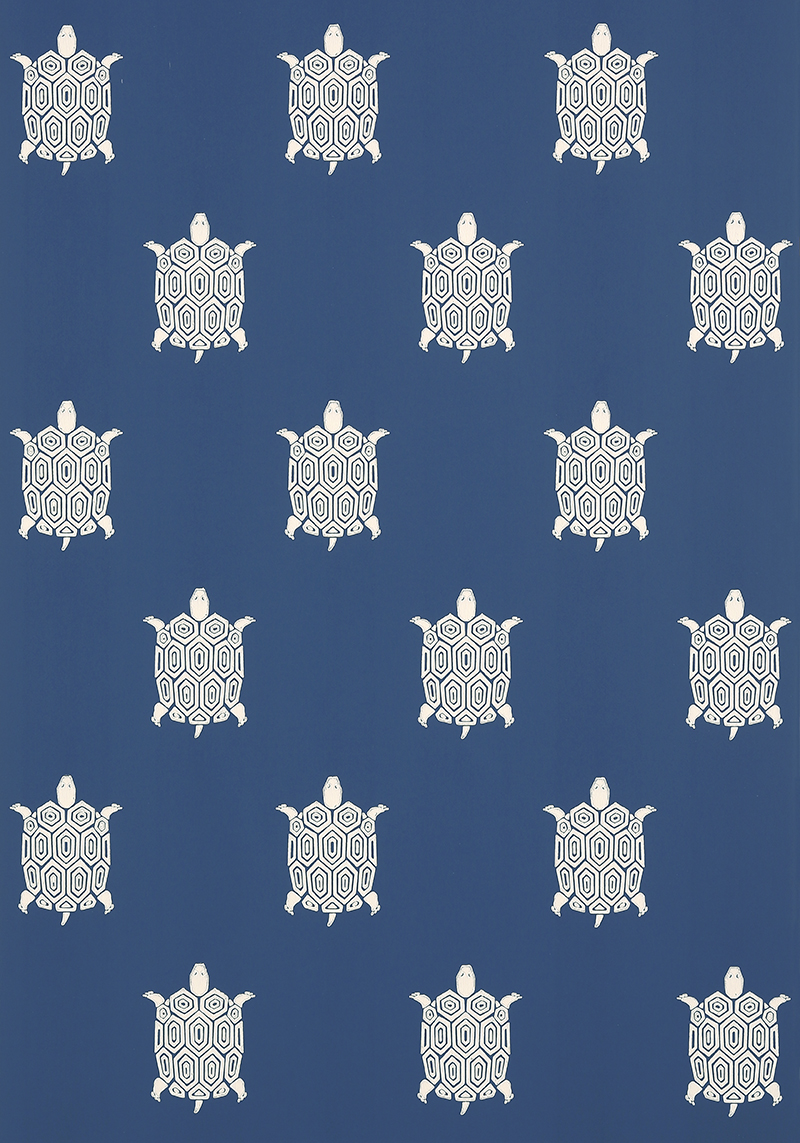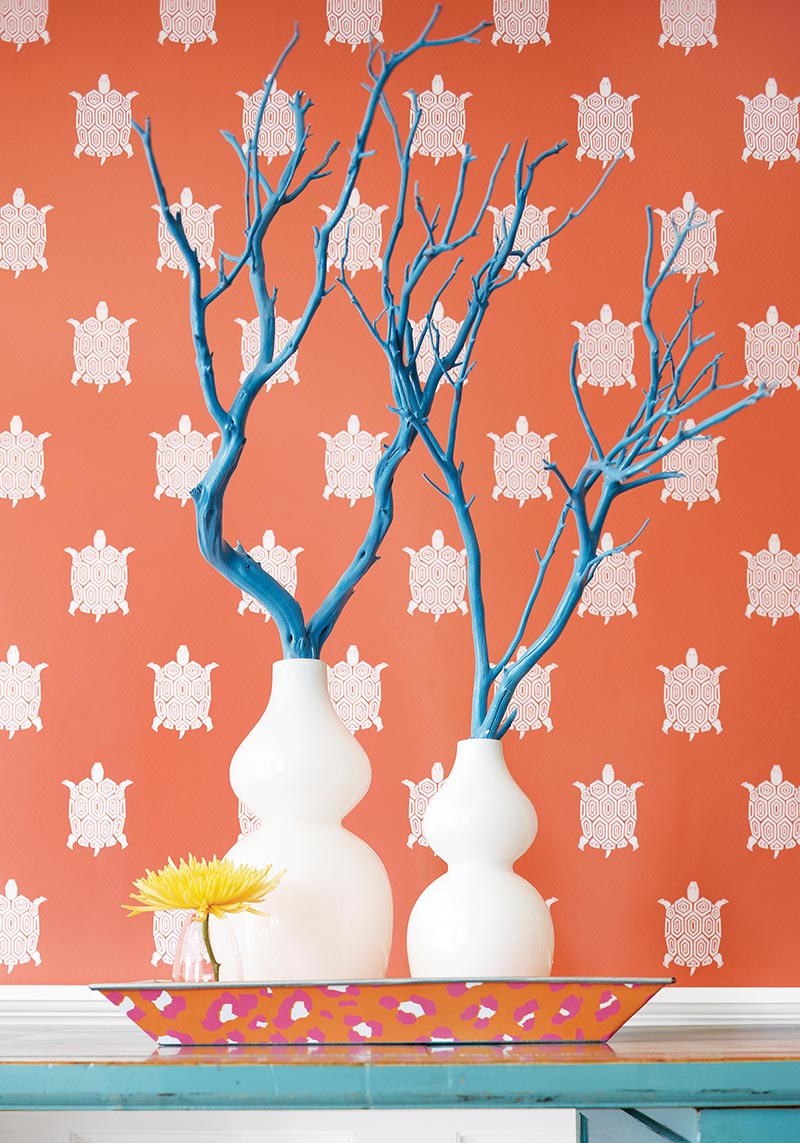03 May Friday Files by: BOYAC – Thibaut Wallpaper – Turtle Bay

This Friday we are profiling the stand out from Thibaut’s Biscayne collection, the “Turtle Bay” wallpaper. The fun-loving and quirky design has truly made this paper a favourite amongst interior designers and architects around the World. We caught up with Stacey Senior Allan, Marketing Director at Thibaut in America, and asked for the story behind this charming design.
Where did you get the inspiration for the design?
The inspiration for this design was derived from a historical document. This “document” was a piece of fabric which could be up to 100 years old. We used the fabric as our main source of inspiration and gave it to our in-house design studio to play around with re-colouring and slightly changing the design. The main change we made to the fabric was changing their feet. The original document had the turtles having some pretty scary claw feet! We then coloured it in contemporary classic Thibaut colours to coordinate with our Biscayne collection.
How is the wallpaper printed?
The wallpaper is printed using a unique blocking process which not many companies do. It is achieved by a rotary cylinder which has impressions engraved on the drum; this method recreates an artisanal, hand painted finish on the paper, giving it multi-dimensional appearance.

What is the content/qualities of the product?
The paper that Thibaut uses for their wallpapers is a dry strip paper which has a preferable texture to most mass produced papers that feel slick and hard. The base paper is manufactured in European mills and referred to as “British pulp paper”. The qualities of this paper include that it is washable, strippable and pre-trimmed making it easier to hang and care for.
What other uses would you suggest apart from hanging it on the wall?
I’ve seen people use our wallpapers for variety of applications: lamp shades are a popular one, some people have used it behind glass for kitchen splashbacks and table tops, as room dividing screens and to line drawers.


